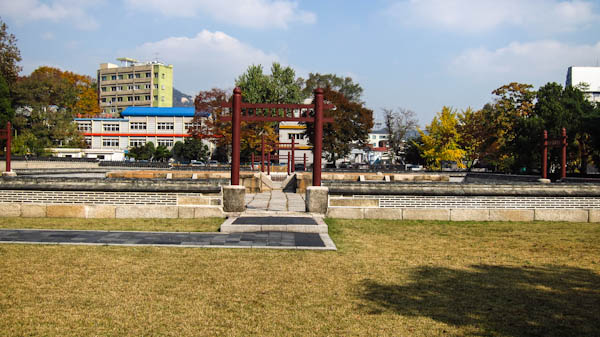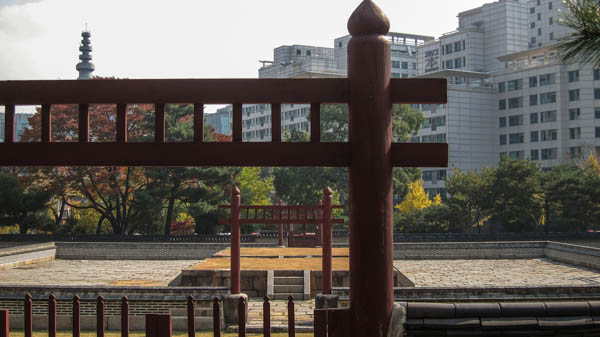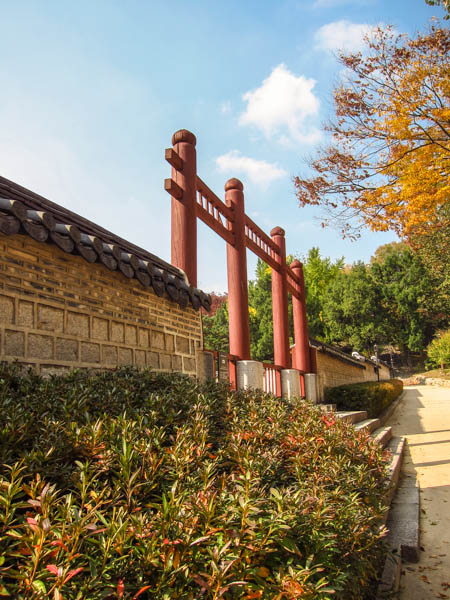
During the Joseon Dynasty, the Seoul Sajikdan (Altar) became a site where sacrifices were made for Sa, the god of earth and land, and Jik, the god of the five grains. In 1395, the capital was moved to Seoul, then known as Hanyang. Under King Taejo, Jongmyo Shrine was constructed to the east of Gyeongbokgung Palace. Sajikdan was constructed to the west of the palace.
Two sets of walls surround the area. Positioned in the east was hongsalmun, a gate for entering a sacred place, and Sadan, the altar for the god of earth and land. Positioned in the west was jikdan which was the altar for the god of the five grains.

According to Cheonwonjibang, heaven is round and earth is square. Accordingly, Sadan and Jikdan are square. Each side is 7.65 meters (25 feet) long. It was here that sacrifices and ceremonies were performed to the gods of the land and grains.
In 1911, all sacrifices at Sajikdan were abolished. Only Sadan and Jikdan were preserved. The area was turned into a park in 1922 during the Japanese occupation of Korea.

Last Updated on Dec 17, 2021